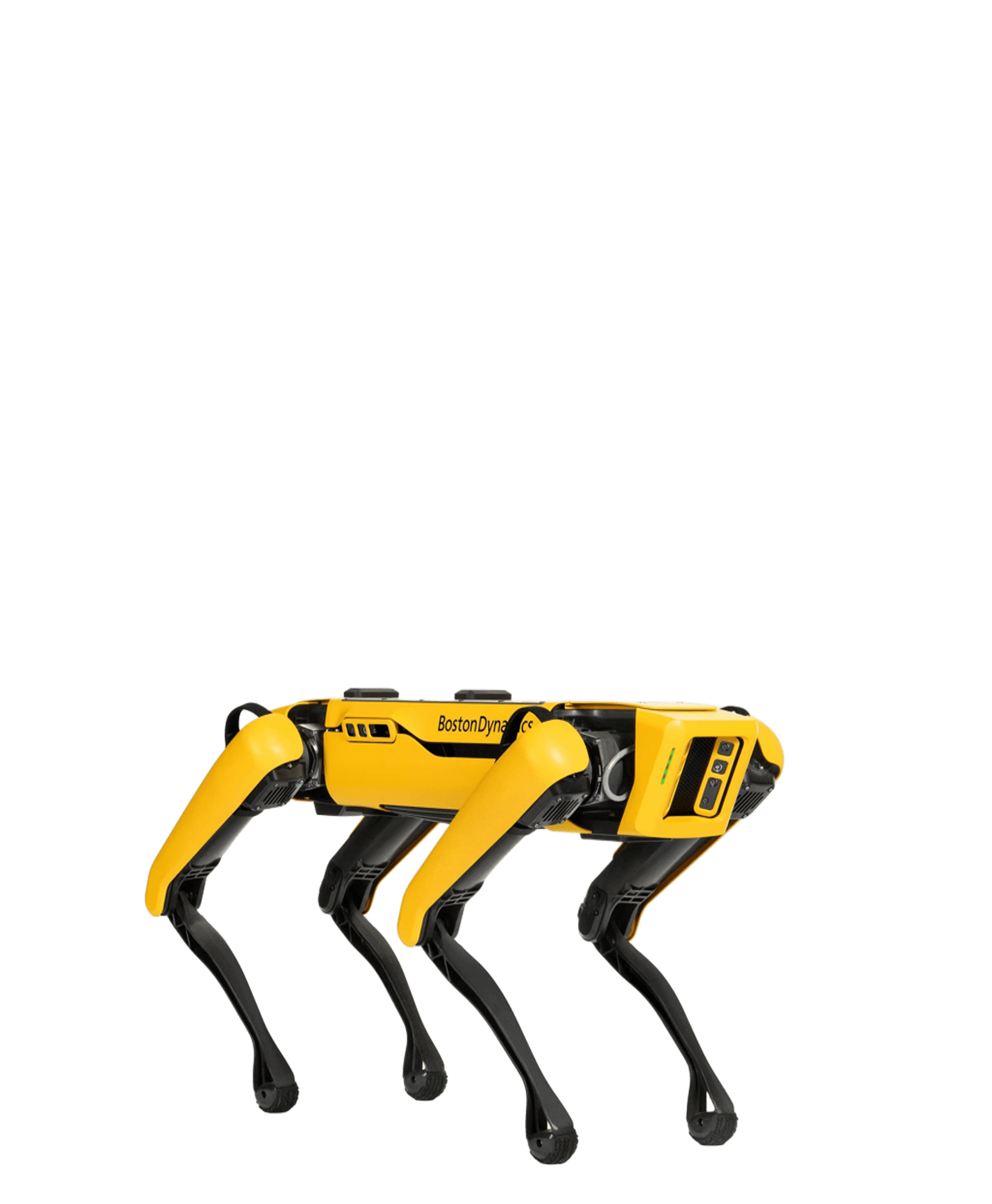Boston Dynamics Spot
The Agile Mobile Robot

about Boston Dynamics Spot
What tasks can Spot perform autonomously in industrial environments?
Spot can autonomously patrol predefined routes using its Autowalk and GraphNav systems. It collects data from onboard cameras and sensors for inspection, mapping, and anomaly detection. This makes it ideal for utility, construction, and hazardous site monitoring.
—
How does Spot adapt to complex or uneven terrain during missions?
Spot uses dynamic gait control and real-time obstacle detection via its stereo cameras to adjust its movement. It can climb stairs, navigate gravel, mud, and slopes up to 30°. This flexibility allows it to operate in environments that wheeled robots can’t access.
—
Can Spot integrate with custom software or third-party hardware?
Yes, Spot offers an open SDK and payload ports for adding sensors, LIDARs, or custom computing modules. Developers can program Spot using Python or ROS to meet specific workflow needs. This makes it a flexible platform for research, automation, and surveillance tasks.
—